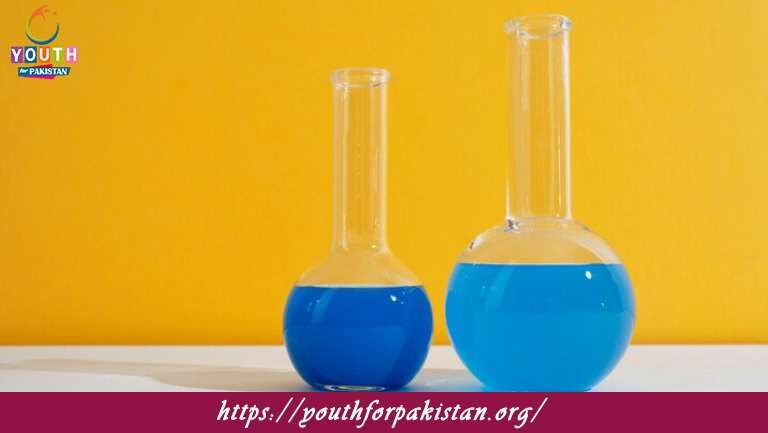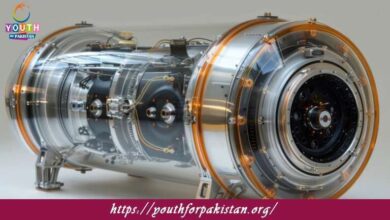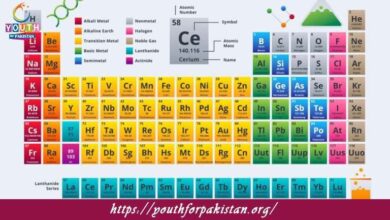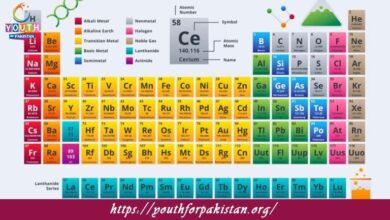12th Class Chemistry Chapter 13 MCQs with Answers

Ace your knowledge of Carboxylic Acids with 12th Class Chemistry Chapter 13 MCQs. Practice properties, acidity, and esterification reactions. Keywords like carboxylic acid quiz, chemistry MCQs, and organic acid test make this resource valuable.
Carboxylic acids contain which functional group?
a) Hydroxyl group (OH)
b) Carbonyl group (C=O)
c) Carboxyl group (COOH)
d) Amine group (NH2)
Which of the following is the general formula for carboxylic acids?
a) R-CO-R
b) R-OH
c) R-CO-H
d) R-COOH
In the carboxyl group (COOH), the carbon atom is bonded to:
a) One oxygen atom and one hydrogen atom
b) Two oxygen atoms
c) One oxygen atom and one alkyl group
d) One oxygen atom and one carbon atom
Which of the following compounds is the simplest carboxylic acid?
a) Methanoic acid
b) Ethanoic acid
c) Propanoic acid
d) Butanoic acid
Which of the following compounds is commonly known as formic acid?
a) Methanoic acid
b) Ethanoic acid
c) Propanoic acid
d) Butanoic acid
Which of the following compounds is commonly known as acetic acid?
a) Methanoic acid
b) Ethanoic acid
c) Propanoic acid
d) Butanoic acid
1
Carboxylic acids are characterized by the presence of the carboxyl group, which is a combination of:
a) Carbon and hydrogen
b) Carbon and oxygen
c) Carbon and nitrogen
d) Carbon and sulfur
The functional group of a carboxylic acid is a(n):
a) Alcohol group
b) Carbonyl group
c) Carboxyl group
d) Amine group
Carboxylic acids are weak acids because they:
a) Are not soluble in water
b) Are insoluble in water
c) Do not ionize completely in water
d) Ionize completely in water
Which of the following is a product of the neutralization reaction between a carboxylic acid and a base?
a) Alcohol
b) Ether
c) Ester
d) Salt
Which of the following compounds is a product of the neutralization reaction between acetic acid and sodium hydroxide?
a) Ethanol
b) Sodium acetate
c) Ethyl acetate
d) Sodium ethoxide
Which of the following compounds is formed when a carboxylic acid reacts with an alcohol in the presence of an acid catalyst?
a) Alcohol
b) Ether
c) Ester
d) Salt
Which of the following reagents can be used to distinguish between carboxylic acids and alcohols?
a) Fehling’s solution
b) Tollens’ reagent
c) Lucas reagent
d) Sodium bicarbonate solution
Carboxylic acids react with sodium bicarbonate (NaHCO3) to produce:
a) Alcohols
b) Ethers
c) Esters
d) Salts
Which of the following is a carboxylic acid salt?
a) Ethanol
b) Sodium acetate
c) Ethyl acetate
d) Sodium ethoxide
Which of the following is the IUPAC name for CH3COOH?
a) Ethanoic acid
b) Methanoic acid
c) Propanoic acid
d) Butanoic acid
Which of the following is the IUPAC name for HCOOH?
a) Ethanoic acid
b) Methanoic acid
c) Propanoic acid
d) Butanoic acid
Which of the following is the IUPAC name for CH3CH2COOH?
a) Ethanoic acid
b) Methanoic acid
c) Propanoic acid
d) Butanoic acid
Carboxylic acids can be prepared by the oxidation of:
a) Aldehydes
b) Ketones
c) Alcohols
d) Esters
The oxidation of a primary alcohol produces:
a) An aldehyde
b) A ketone
c) A carboxylic acid
d) An ester
The oxidation of a secondary alcohol produces:
a) An aldehyde
b) A ketone
c) A carboxylic acid
d) An ester
The oxidation of a tertiary alcohol produces:
a) An aldehyde
b) A ketone
c) A carboxylic acid
d) An ester
Which of the following is a product of the oxidation of ethanol?
a) Ethanoic acid
b) Methanoic acid
c) Propanoic acid
d) Butanoic acid
Which of the following is a product of the oxidation of propan-1-ol?
a) Ethanoic acid
b) Methanoic acid
c) Propanoic acid
d) Butanoic acid
Carboxylic acids can be reduced to form:
a) Alcohols
b) Aldehydes
c) Ketones
d) Esters
Which of the following reagents can be used to reduce a carboxylic acid to an alcohol?
a) H2SO4
b) NaBH4
c) LiAlH4
d) H2/Pt
Which of the following compounds is a product of the reduction of ethanoic acid?
a) Ethanol
b) Methanol
c) Propanol
d) Butanol
Carboxylic acids undergo nucleophilic addition-elimination reactions to form:
a) Alcohols
b) Ethers
c) Esters
d) Aldehydes
Which of the following compounds is a product of the reaction between a carboxylic acid and an alcohol in the presence of an acid catalyst?
a) Alcohol
b) Ether
c) Ester
d) Salt
The reaction between a carboxylic acid and an alcohol in the presence of an acid catalyst is called:
a) Esterification
b) Hydration
c) Acetalization
d) Cyanohydrin formation
Which of the following is the major product obtained when a carboxylic acid is heated with excess alcohol in the presence of an acid catalyst?
a) Alcohol
b) Ether
c) Ester
d) Salt
The process of converting an ester back to the original carboxylic acid and alcohol is called:
a) Hydrolysis
b) Reduction
c) Dehydration
d) Oxidation
Which of the following is a product of the hydrolysis of an ester?
a) Carboxylic acid
b) Alcohol
c) Aldehyde
d) Ketone
Which of the following reagents can be used to hydrolyze an ester?
a) H2SO4
b) H2O
c) NaBH4
d) LiAlH4
The reaction between a carboxylic acid and thionyl chloride (SOCl2) produces:
a) An alcohol
b) An aldehyde
c) An amine
d) An acyl chloride
Which of the following compounds is an acyl chloride?
a) Ethanol
b) Methanol
c) Propanoyl chloride
d) Butanol
The reaction between a carboxylic acid and an amine produces:
a) An alcohol
b) An aldehyde
c) An amide
d) An acyl chloride
Which of the following compounds is an amide?
a) Ethanol
b) Methanol
c) Propanamide
d) Butanol
Carboxylic acids react with alcohols in the presence of an acid catalyst to form:
a) Aldehydes
b) Ethers
c) Esters
d) Acyl chlorides
Which of the following reagents can be used to convert a carboxylic acid to its corresponding ester?
a) H2SO4
b) H2O
c) NaBH4
d) CH3OH
Carboxylic acids can undergo decarboxylation to produce:
a) Alcohols
b) Aldehydes
c) Ketones
d) Alkanes
Which of the following compounds is a product of the decarboxylation of ethanoic acid?
a) Ethanol
b) Methanol
c) Methane
d) Ethane
Carboxylic acids react with alcohols to form:
a) Ethers
b) Esters
c) Acyl chlorides
d) Amides
Which of the following reagents can be used to convert a carboxylic acid to its corresponding acyl chloride?
a) H2SO4
b) H2O
c) NaBH4
d) SOCl2
The process of converting an acyl chloride back to the original carboxylic acid is called:
a) Hydrolysis
b) Reduction
c) Dehydration
d) Decarboxylation
Which of the following is a product of the hydrolysis of an acyl chloride?
a) Carboxylic acid
b) Alcohol
c) Aldehyde
d) Ketone
The reaction between a carboxylic acid and a Grignard reagent produces:
a) An alcohol
b) An aldehyde
c) A ketone
d) A carboxylic acid
Which of the following compounds is a product of the reaction between a carboxylic acid and a Grignard reagent?
a) Ethanol
b) Methanol
c) Propanone
d) Butanol
Carboxylic acids react with alcohols in the presence of a Lewis acid catalyst to form:
a) Aldehydes
b) Ethers
c) Esters
d) Acyl chlorides
Which of the following reagents can be used to convert a carboxylic acid to its corresponding ester in the presence of a Lewis acid catalyst?
a) H2SO4
b) H2O
c) NaBH4
d) BF3
The process of converting an ester back to the original carboxylic acid and alcohol in the presence of a Lewis acid catalyst is called:
a) Hydrolysis
b) Reduction
c) Dehydration
d) Decarboxylation
Which of the following is a product of the hydrolysis of an ester in the presence of a Lewis acid catalyst?
a) Carboxylic acid
b) Alcohol
c) Aldehyde
d) Ketone
Carboxylic acids react with ammonia or amines to form:
a) Alcohols
b) Aldehydes
c) Amides
d) Carboxylic acid salts
Which of the following compounds is a product of the reaction between a carboxylic acid and ammonia?
a) Ethanol
b) Methanol
c) Propanamide
d) Butanol
Which of the following reagents can be used to convert a carboxylic acid to its corresponding amide?
a) H2SO4
b) H2O
c) NaBH4
d) NH3
Carboxylic acids can undergo decarboxylation to produce:
a) Alcohols
b) Aldehydes
c) Ketones
d) Alkanes
Which of the following compounds is a product of the decarboxylation of ethanoic acid?
a) Ethanol
b) Methanol
c) Methane
d) Ethane
Carboxylic acids react with alcohols to form:
a) Ethers
b) Esters
c) Amides
d) Acyl chlorides
Which of the following reagents can be used to convert a carboxylic acid to its corresponding ester?
a) H2SO4
b) H2O
c) NaBH4
d) CH3OH
Carboxylic acids can be reduced to form:
a) Alcohols
b) Aldehydes
c) Ketones
d) Esters
If you are interested to enhance your knowledge regarding Physics, Chemistry, Biology, and Computer please click on the link of each category, you will be redirected to dedicated website for each category.





